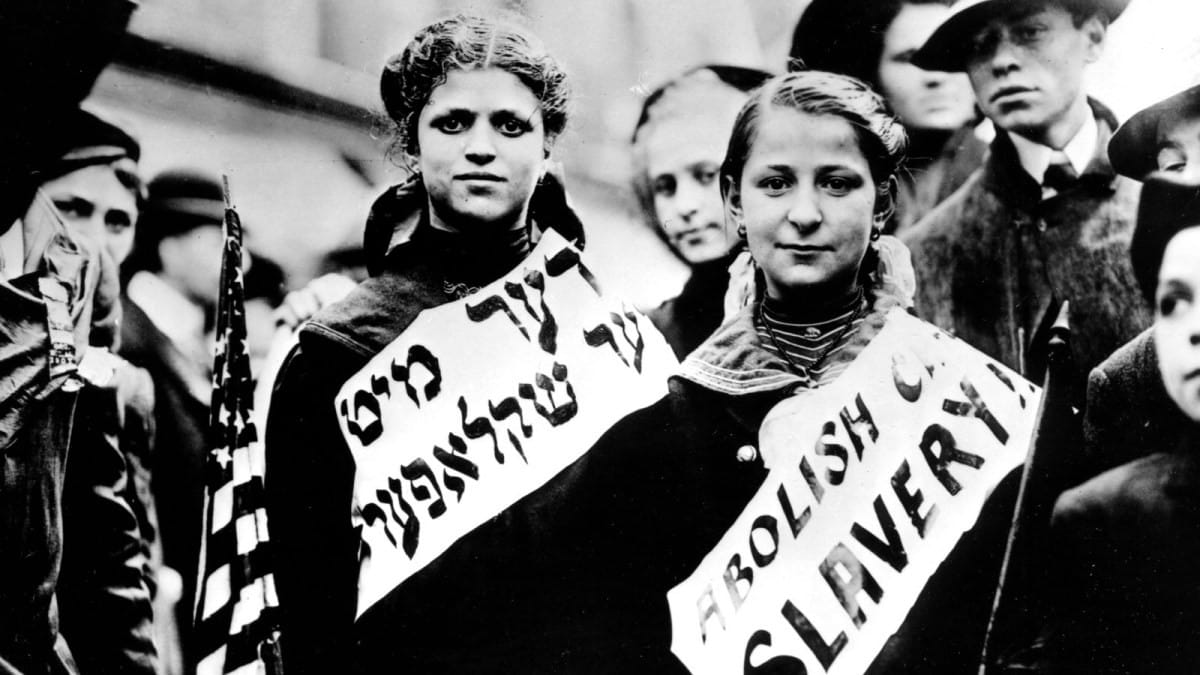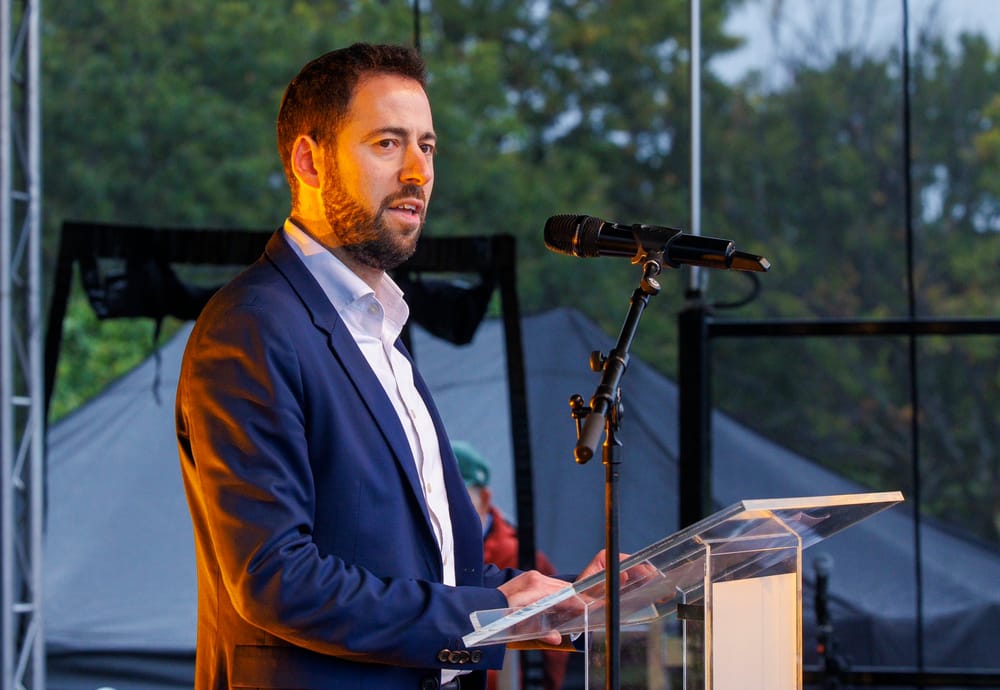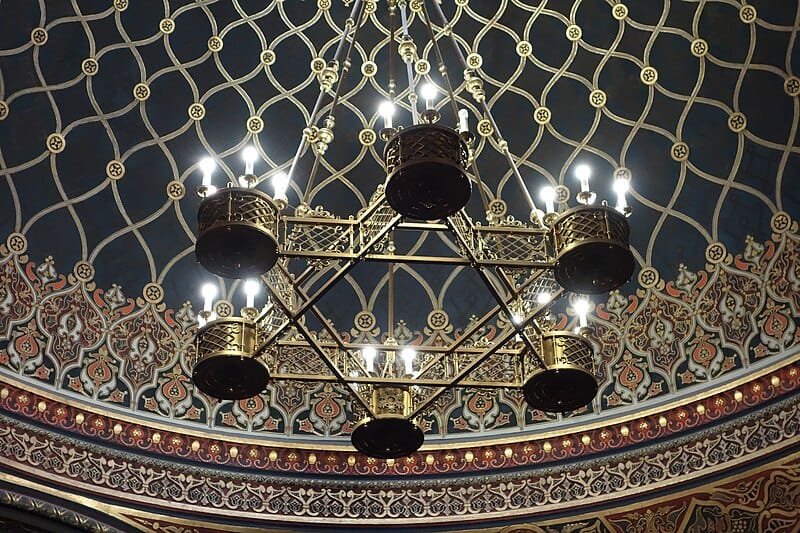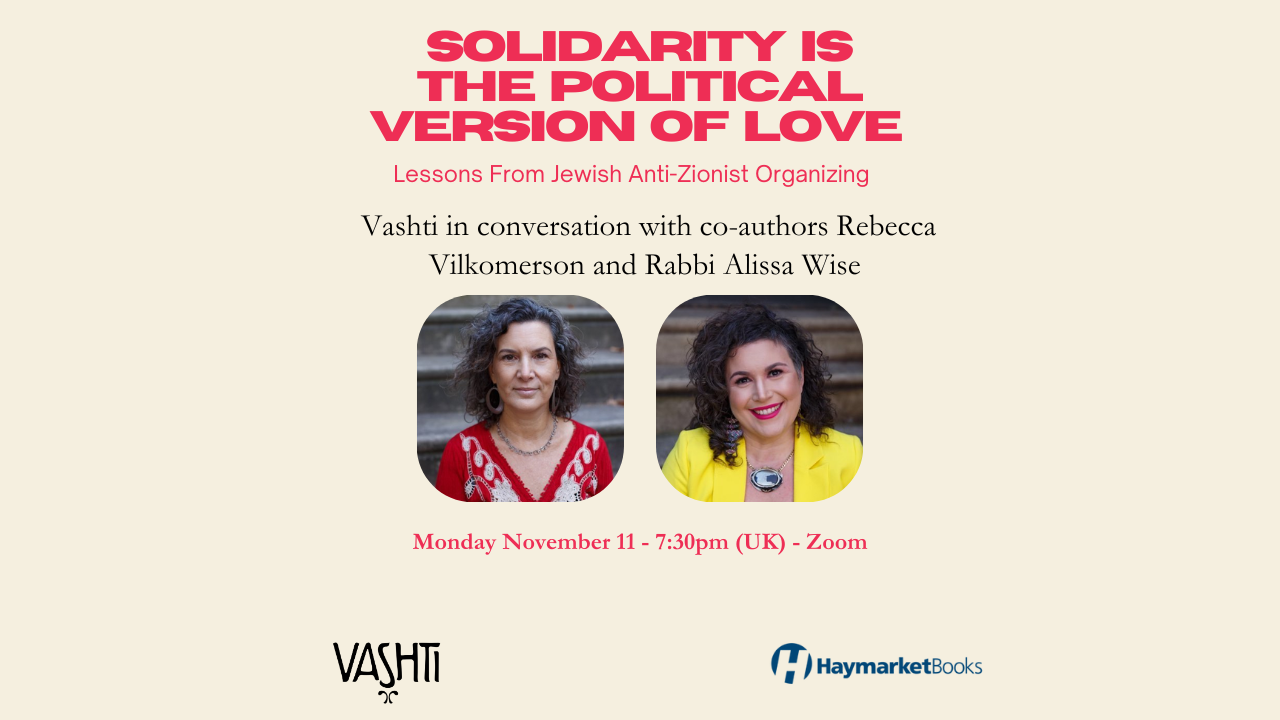The romance of American Jewish anarchism
A nostalgic portrait of America’s oldest Yiddish anarchist newspaper, and the community that coalesced around it, is recounted in a recently restored documentary.

The folklore of American capitalism is replete with tales of self-made men who climbed the social ladder to leave behind the proverbial rags and enjoy the riches of a society that granted you anything in return for hard work. But the land of opportunity was never exactly so, not for everyone at least. Free Voice of Labor: The Jewish Anarchists (1980), a documentary by Steven Fischler and Joel Sucher recently restored by Harvard Film Archive and IndieCollect, chronicles the stories of those who, instead of chasing the American Dream and its chimaeras, fought the injustices upon which its enduring myth rests.
The lyrics of Solomon Schmulewitz’s “Ellis Island” accompany one of the film’s opening sequences featuring archive footage of New York Harbor’s “gateway to freedom” which, as the song points out, was an “overwhelming and frightening” place that “punished the persecuted without reason”.
Rhetorically overshadowed by the Statue of Liberty that rises above it, Ellis Island served for many years as the busiest immigrant inspection station in the United States. Some of those who were allowed past its gates went on to found the Freie Arbeiter Stimme (Free Voice of Labor), a Yiddish-language anarchist paper published in the US from 1890 to 1977. Its story, and that of the community that coalesced around it, is recounted in the documentary by the members of its last editorial collective. On the day of its closure – 25 November 1977 – one of them recalls a time when the Freie Arbeiter Stimme was but one of many foreign-language anarchist publications coming out of America. Of all of them, it was the last to close down.

The Freie Arbeiter Stimme was born out of the struggles Jewish immigrants from Eastern Europe waged in the land of the free and home of the brave. “They were uprooted and cast into another world where the conditions of labour were, if anything, worse than they had been in the old country,” remarks the historian Paul Avrich who is interviewed throughout the documentary. Through the testimonies of its first generation, the film retraces the people of Jewish immigrants who, from the shtetls of Eastern Europe, fleeing persecution, ended up in the working-class neighbourhoods of New York, Philadelphia, Boston and other North American cities. To a mythopoetic extent, the film trails the narrative trajectory of the masterpiece of Yiddish literature that is I. J. Singer’s The Family Carnowsky but adding a political twist to it. “Jews who’d come out of eastern Europe were not only a religious group, they were treated as a nationality with a lot of prejudice against them,” notes Abe Bluestein, an anarchist from Philadelphia who had participated in the Spanish Civil War. “So just as there were Spanish and Italian anarchists, so there were Jewish anarchists,” he explains. The “Jewish” prefix before “anarchists”, rather than a strictly ethnoreligious connotation, was more of a communitarian marker – an inclusive one at that. The political community the coalesced around Freie Arbeiter Stimme lived, struggled, and fraternized with other immigrant groups; at demonstrations placards demanding better working conditions were written in English, Yiddish, Italian and Russian. The anarchists depicted in Fischler and Sucher’s film were, in Isaac Deutscher’s idiom, “non-Jewish Jews“: members of a community whose religious credo they did not share, but whose culture and heritage they claimed and treasured. The Freie Arbeiter Stimme championed Yiddish literature, theatre and poetry, sustaining a language that was slowly falling into disuse (a trend that contributed to the paper’s eventual demise).
Culture and revolutionary politics were never separate realms for the Jewish anarchists. Yiddish music and theatre could be heard and seen at prisoner balls, solidarity soirées and other militant events that filled their weekends. The liberation of time from the abuses of wage labour was and remains one of the pillars of anarchist thought. Anarchists played a pivotal role in the struggle for a five-day working week and eight-hour workday. Mostly active in the “needle trade”, they helped unionise workers and form the International Ladies Garment Workers Union, the Amalgamated Clothing Workers of America and other unions, which at the time had a strong anarcho-syndicalist orientation.
 Agitation and organizing were by no means relegated to the pages of the Freie Arbeiter Stimme. The people who wrote and edited the newspaper were also shop floor workers on the front line of wild cat strikes, demonstrations and other direct actions. The paper also covered political developments in the old country, most notably the October Revolution which had initially promised to deliver the working class from their chains. Sceptical of Lenin’s statism, Jewish anarchists were among the first to oppose the authoritarian drift which followed the Bolsheviks’ seizure of power, in which power was gradually redirected from the newly-formed soviets to the State.
Agitation and organizing were by no means relegated to the pages of the Freie Arbeiter Stimme. The people who wrote and edited the newspaper were also shop floor workers on the front line of wild cat strikes, demonstrations and other direct actions. The paper also covered political developments in the old country, most notably the October Revolution which had initially promised to deliver the working class from their chains. Sceptical of Lenin’s statism, Jewish anarchists were among the first to oppose the authoritarian drift which followed the Bolsheviks’ seizure of power, in which power was gradually redirected from the newly-formed soviets to the State.
For the Jewish anarchists, political action was never limited to the workplace or the street but extended to every aspect of life, from education to marriage. Jewish anarchists were involved in establishing the anarchist-experimental school, Ferrer Modern School in Stelton, New Jersey, which ran from 1915 to 1951. The Ferrer Modern School was inspired by Spanish anarchist Francisco Ferrer, an anti-clerical, libertarian educationist who, in 1901 founded the Escuela Moderna in Barcelona, a school with neither grades nor exams, rewards nor punishments. Marriage too was considered unnecessary by anarchists who didn’t see why either the State or a religious authority should legislate and intrude on the love between two or more people. Abe Bluestein, also an alumnus of the Ferrer Modern School, is filmed at one of its annual reunions describing the non-hierarchical ethos and practices of the school and the alternative to canonical education it had once provided. He also candidly admits that he and his partner had to finally marry, late in their life and in spite of their convictions, because other comrades had warned them of the difficulties unmarried couples encounter with Social Security.

Predictably, the US government wasn’t exactly thrilled by the anarchists and their activities (let alone the fact that they were foreigners), especially when they vehemently opposed WWI and fought against the draft. Under the Espionage Act of 1917, many were deported back to Europe, including the anarcho-feminist activist and writer Emma Goldman and her close comrade, Alexander Berkman. “In one boatload alone, in December 1919, the cargo contained 250 anarchists that were being shipped back to Russia,” Paul Avrich remarks.
Interspersed throughout the film are sequences taken from Uncle Moses (1932), a Yiddish-language American movie about a young woman torn between a marriage of convenience with a wealthy sweatshop owner and her passionate love for a young union organiser. The film attempts to dispel the myth of communitarian cohesiveness by exposing the class stratification and consequent conflict present within the Jewish community. Under the guise of cinematographic fiction, Uncle Moses provides useful historical context for understanding the social and political motivations of the early Jewish anarchists. The documentary also excerpts footage from DW Griffith’s short film The Voice of the Violin (1909) featuring the ultimate anarchist stereotype of the crazed bomber. In reality, while revolutionary violence was not categorically ruled out by anarchists, such tactics were always marginal within the movement.
Towards the end Fischler’s and Sucher’s film somberly investigates the lack of generational renewal among Jewish anarchists at the time, adducing as one of the possible reasons the fact that political militancy for this community was intimately linked to the immigrant experience. While that is certainly true, watching Free Voice of Labor today, one is happily reminded that this political tradition is far from dead; its legacy has been rekindled for the struggles of today and lives on in such organisations as Jews For Racial & Economic Justice, Never Again Action, If Not Now, Jewish Voice for Peace and others. What at the time felt like the end of a political era, today looks like but one stage in the never-ending fight against oppression and exploitation. ▼
Giovanni Vimercati is a film critic and graduate student at the American University of Beirut.
Author
Giovanni Vimercati is a film critic and graduate student at the American University of Beirut.
Sign up for The Pickle and New, From Vashti.
Stay up to date with Vashti.



